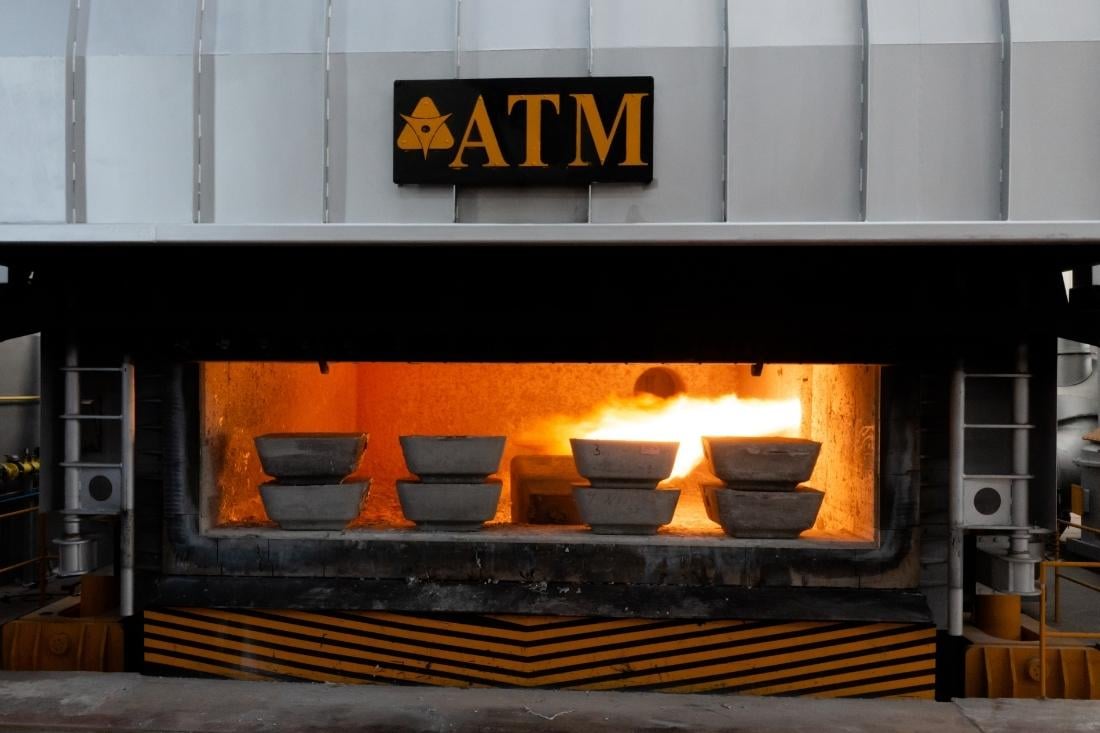How Does Heat Treated Aluminum Work?
Heat-treated aluminum annealing can be carried out by solution heat treatment, natural and artificial aging or homogenization.

Each aluminum alloy has unique physical properties that make them ideal for specific applications. Heat treatment is a critical method to further improve these properties.
Heat treatment involves controlled heating and cooling processes to change the microstructure of an aluminum product and improve its properties.
The process is similar to heat treatment of steel, but the heating process is different due to aluminum's lower melting point and high thermal conductivity.
This article will provide detailed information about heat-treated aluminum and its alloys to help you decide whether this process is suitable for your project.
Strengthening Aluminum by Heat Treatment
Various aluminum alloys can be heat treated to improve their properties and strengthen them. Manufacturers use this process to increase the strength, ductility and hardness of aluminum and reduce internal stresses. Generally, the following alloy series may be suitable for heat treatment:
- 2XXX Series
- 6XXX Series
- 7XXX Series
- 8XXX Series
- 4XXX Series (In some cases)
The suitability of aluminum alloys for heat treatment depends on their chemical composition. At high temperatures, some elements dissolve more in aluminum, making it possible to achieve an even distribution of atoms and thus improve the alloy's properties.
Heat Treatments Applicable to Aluminum Alloys
Various heat treatments can be used to improve the properties of aluminum alloys and make them suitable for different applications. Here are the most preferred types of heat treatment for aluminum alloys:
1) Annealing
Annealing is an important heat treatment method in the processing of aluminum and its alloys. Here are the main features and effects of this process:
Purpose and Effects of the Process
- Elimination of Effects After Cold Working: When aluminum is cold worked, it creates internal stresses. These stresses increase the strength and hardness of the material, but ductility and formability are reduced. Annealing is applied to reduce these negative effects.
- Work Hardening and its consequences: Work hardening is the hardening of the material as a result of cold working. This reduces the formability of the material and can lead to cracking.
- Alleviation of Internal Stresses: Annealing reduces the stresses in the internal structure of aluminum, making the material more resistant to deformation.
- Crack Prevention in Cast Aluminum Parts: Especially in cast aluminum parts, annealing reduces internal stresses and prevents future crack formation.
Transaction Process
- Heating and Cooling: The annealing process involves heating the aluminum alloy to a certain temperature, holding it at that temperature for a certain period of time, and then slowly cooling it to room temperature.
- Resetting the Crystal Structure: During this process, the crystal structure of the material is rearranged, leading to increased ductility and formability.
2) Solution Heat Treatment
Solution heat treatment is an important type of heat treatment used to improve the properties of aluminum alloys. Here are the characteristics and process of this treatment:
Purpose and Effects of the Process
- High Temperature Heating and Quenching: This process involves high temperature heating, like annealing, but with the difference that the material is quenched rapidly, usually in water. Quenching "freezes" the microstructure of the aluminum and prevents the redistribution of atoms.
- Aging and Hardening: Quenched aluminum can be hardened by the aging process. This process increases the strength and other mechanical properties of the alloy.
Suitability for Subsequent Forming Processes: The quenching process allows the aluminum to become suitable for subsequent forming processes.
Transaction Process
- Hardening Elements in Solid Solution: This process increases the concentration of hardening alloying elements present in the solid solution, allowing the elements to exert maximum hardening effect before precipitation.
- Ideal Temperature and Precise Control: For solution heat treatment to be effective, an ideal temperature of only a few degrees below the melting point of the alloy is required. This narrow temperature range makes very precise furnace control essential for the success of the process.
3) Natural and Artificial Aging
Natural and artificial aging are important heat treatments used to increase the strength and hardness of aluminum alloys. Here are the characteristics and effects of these processes:
Aging Process and Its Effects
- Natural Aging: A process that begins naturally after solution heat treatment. During this process, the strength and hardness of the alloy increases from the initial level to high levels.
- Locking of the Microstructure: When the aging process begins, the microstructure of the alloy is locked into its final position by the collapse of solid solution elements.
- Timing of the Natural Aging Process: In natural aging, the majority of hardening takes place in the first 24 hours after treatment and usually gains full effectiveness within four to five days.
Artificial Aging and the Process
- Artificial Aging (Precipitation Hardening): Some alloys cannot reach their maximum strength by natural aging. Artificial aging achieves full precipitation by heating these alloys to higher temperatures.
- Heating and Cooling Process: The alloy is heated to a specific temperature and held at that temperature for six to 24 hours, then cooled to room temperature.
- Increase in Strength and Hardness: The result of artificial aging is an increase in strength and hardness at the expense of a decrease in ductility.
4) Homogenization
Homogenization is an important type of heat treatment used to improve the properties of aluminum alloys. The main purpose and process of this process is as follows:
Purpose and Effects of the Process
- Achieving Homogeneous Chemistry: The main purpose of the homogenization process is to redistribute the elements in the alloy to ensure a homogeneous product chemistry. This process is particularly useful for castings that solidify at different rates starting from the mold edges.
- Redistribution by Melting Temperature: Elements with low melting temperatures (such as pure aluminum) usually solidify first at the outer edges, while elements with higher melting temperatures move toward the center of the casting and solidify.
- Elimination of Inequalities: Without homogenization, the alloy may be too soft in some areas and too hard and brittle in others. This can lead to product failure.
Transaction Process
- Heating and Cooling: For homogenization, the alloy is heated to a temperature just below its melting point and then cooled slowly.
- Differences with Annealing: Homogenization is done at a higher temperature than annealing. While annealing allows recrystallization by the movement of grain boundaries, homogenization also allows the passage of alloying elements, ensuring an even chemical distribution throughout the product.
These heat treatments are vital for aluminum alloys to gain properties suitable for specific applications. Each process optimizes the strength, ductility, machinability and other mechanical properties of aluminum, enabling its use in a wide range of applications.
Heat Treatment and Tempering
In the terminology of aluminum alloys, temper designations indicate the heat treatments the alloy has undergone, which have a major impact on its properties. Here are the key points you need to know about it:
Meaning of Temper Definitions
- 'O' - Annealed: The letter 'O' indicates that the alloy has been annealed. This means that the alloy has been heat treated after cold working to reduce its internal stresses and improve its ductility.
- 'W' - Solution Heat Treated: The letter 'W' indicates that the alloy has been solution heat treated. This treatment increases the strength and hardness of the alloy.
- 'T' - Aged: The letter 'T' indicates that the alloy has been aged. This means that the strength and hardness of the alloy have been increased through natural or artificial aging.
Heat Treatments and Effects of Tempers
- Effect of Temper on Properties: Different temper designations have significant effects on the mechanical properties of the aluminum alloy and its suitability for the application.
- Selecting the Appropriate Temper for the Project: When selecting the aluminum alloy to be used in a project, it is important to know the meaning of temper designations and how these treatments will affect the properties of the alloy.

